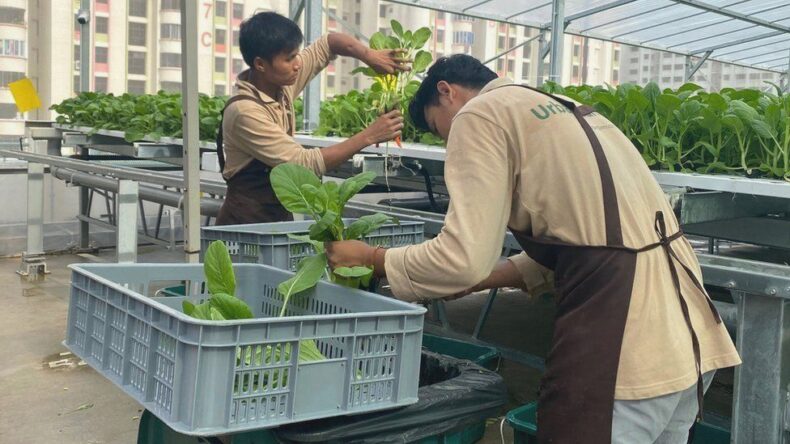Singapore is a small, resource-constrained city-state that is connected to the rest of the world

In Singapore, Eyleen Goh manages a farm from the top deck of a parking garage. It also sells up to 400kg of vegetables per day to adjacent merchants, according to her, making it no little operation. Despite Singapore’s small size, there are several parking lots. Having farms to meet the requirements of the community’s people is essentially the dream.
In 2020, the government began leasing the odd plots as part of its goal to boost domestic food production. Currently, the 5.5 million-person nation imports more than 90% of its food. Singapore wants to boost the amount of food it grows in a variety of ways, not just on rooftop farms. The majority of the nation’s domestically grown food is produced in high-tech facilities that receive significant government subsidies. Official records indicate that as of 2020, it had 238 permitted farms.
For Singapore, food security is a crucial concern. Singapore is a small, resource-constrained city-state that is connected to the rest of the world, making it prone to outside shocks and supply interruptions. But because there is little room in this highly populated island nation, the land is expensive. The most expensive real estate in the world is found in Singapore.
Singapore wants to produce more than three times as much food as it does now, or 30%, by the year 2030. The issue of food security was brought into sharp light in Singapore earlier this year when several nations in the area banned or restricted the shipment of essential goods. Governments that rely on imports made an effort to safeguard their food supplies as the pandemic and the Ukraine war drove up the price of everything from basic commodities to crude oil.
Singapore is providing a lot of financial aid and subsidies to business owners in this industry. The issue is whether these farms will continue to run and be financially successful after the government backing expires.
Every day, farms gather their crops. It might range from 100kg to 200kg to 400kg each day, depending on the crops that are growing. Eileen estimates that constructing the farm cost about S$1 million ($719,920; £597,720), with a large portion of the funds going toward equipment to facilitate faster harvesting.
Despite certain subsidies, Ms Goh claims her company is still not viable. She has 10 staff and pays rent for the location as well as another car park plot, which is still being developed, for about S$90,000. Singapore’s rooftop farmers are also developing alternative sources of income. Unrelated to Ms Goh, Nicholas Goh claims he has made money by charging customers a monthly charge to gather vegetables at his urban farm. But she shares the thoughts of farmers who came before her throughout the ages: “It’s not an option to give up. It will be more gratifying if it is more difficult.”
According to Professor William Chen of Nanyang Technological University in Singapore, urban farms should receive more support. According to Prof. Chen, the programme director for the university’s food science and technology department, “there are measures in place such as productivity grants from SFA, and regular farmers’ markets to encourage customers to buy more local produce.”













